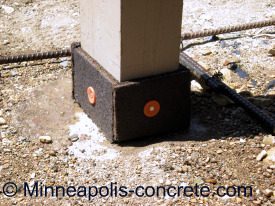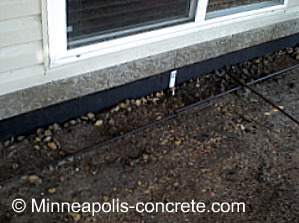612-470-8575
Thinking of Buying or Selling? We have top real estate partners nationwide! Reach out first for expert guidance and a home value report. Click the "Request a Quote" Button to connect!
Installing Concrete Expansion Joints
It's important to install concrete expansion joints on stationary objects the concrete is up against. Some examples of such stationary structures are: a house, a building or deck posts. If expansion joints aren't installed, there's a risk of damage to the concrete or the structure the concrete parallels. The expansion joint buffers any movement caused by the freeze/thaw cycle common in environments such as Minnesota.

Purchase expansion joints at a home improvement store in various sizes. For the four inch patio we are pouring here, we bought 4 inch width expansion joint and enough to cover the sides of the house and deck posts. If the structure the concrete is up against is wood, nail or screw the expansion joint to it (pictured above). Otherwise, lay the expansion joint up against the structure and make sure as you pour the concrete, the expansion joint remains flush with the structure and doesn't fall forward into the concrete.
Pictured below: expansion joint up against a concrete structure. We placed it and secured with fill dirt to keep it stable.

After installing expansion joints, the next step in the process of diy concrete is to make your own concrete or call for concrete delivery.
Does pouring your own concrete sound too complicated? If so, and you live in the Minneapolis and surrounding suburbs area, request a quote on your project.
License # BC721668





New! Comments
Have your say about what you just read! Leave me a comment in the box below.